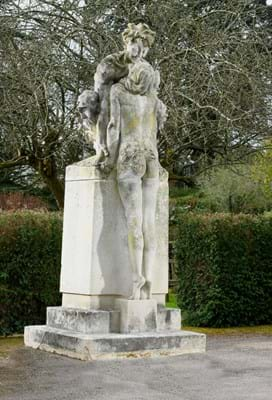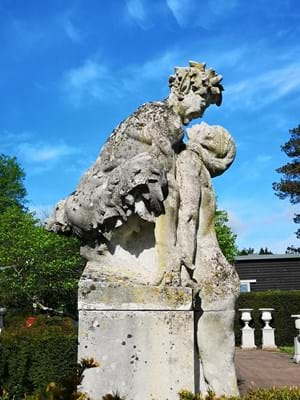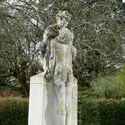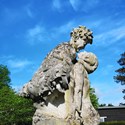1. Pair of Jagger statues
A pair of monumental sculptures by Charles Sargeant Jagger, who created many war memorials after he returned from the First World War, will be offered at Summers Place Auctions on June 11.
The 11.5ft (3.5m) high pair of Portland stone statues of a nymph and satyr, carry an estimate of £200,000-400,000.
Jagger served in the Artists Rifles and was awarded the Military Cross. After the war he completed six war memorials from 1921 to 1923 before starting on The Royal Artillery Memorial at Hyde Park Corner in London.
These sculptures at Summers Place were commissioned for Melchett Court, Hampshire and are a departure from his war work revealing a romantic, more classical style. They previously appeared at auction at Sotheby's in Billingshurst almost 20 years ago.
2. John Piper's Welsh landscape
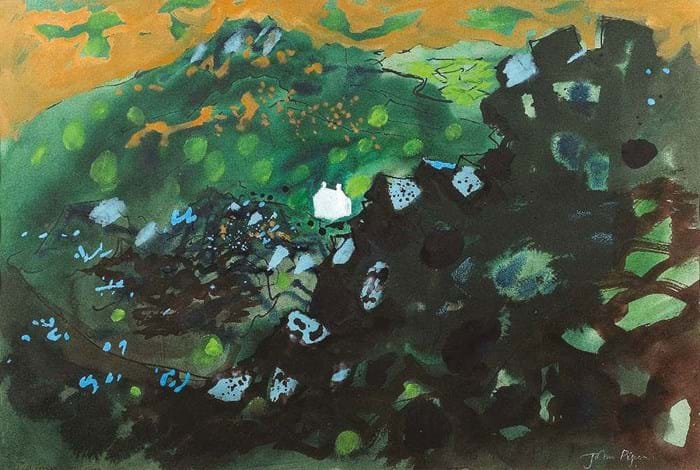
This signed mixed-media work by John Piper of Garn Fechan in Pembrokeshire, Wales, is estimated at £5000-7000 in the June 11 auction at Bearnes Hampton & Littlewood.
A June 11 sale at Exeter saleroom Bearnes Hampton & Littlewood will bring together more than 350 lots of pictures, ceramics and works of art across all disciplines from the 20th century to Contemporary.
Estimated at £5000-7000 is this signed 15 x 22in (38 x 57cm) mixed-media work by John Piper (1903-92) of Garn Fechan in Pembrokeshire, Wales, above.
Garn Fechan sits a few hundred metres east of Garn Fawn where Piper and his wife Myfanwy bought a ruined cottage as a retreat in 1962.
3. Indian toy soldier
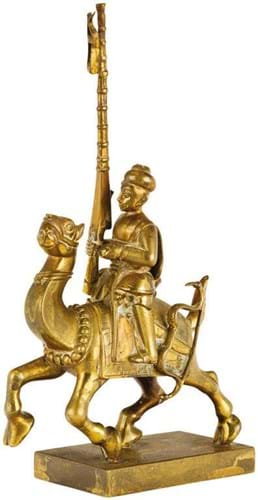
This brass model of a soldier riding a camel is one of the so-called Vizagapatam Toy Soldiers and is estimated at £2000-3000 at Roseberys on June 12.
This brass model of a soldier riding a camel is one of the so-called ‘Vizagapatam Toy Soldiers’ – a mysterious set of late 18th century pieces named after the city on India’s eastern coast where they were believed to have been manufactured. It has not yet been established who they were made for.
The set is unusual in Indian sculpture for its humorous caricatures of the military, with soldiers given oversized heads and weapons to exaggerate their pomposity and swagger. Examples are found in collections at the Ashmolean Museum in Oxford, the Victoria & Albert Museum in London and the Sandringham and Madras Museums in India.
This piece, which has been in a private UK collection since the 1990s, is estimated at £2000-3000 in an Arts of India auction at Roseberys in West Norwood, London, on June 12.
4. Bronze equestrian sculpture

Silverwoods of Lancashire will offer a late 19th century bronze copy of Andrea del Verroccio’s equestrian sculpture of the Italian military leader Bartolomeo Colleoni, which stands in the Piazza San Marco in Venice, estimated at £500-1000.
Silverwoods of Lancashire will offer a late 19th century bronze copy of Andrea del Verroccio’s (c.1435-88) famous equestrian sculpture of the Italian military leader Bartolomeo Colleoni, which stands in the Piazza San Marco in Venice.
The large 2ft 1in (63cm) high black patinated figure with metal fabric reins comes with an estimate of £500-1000 in an auction of Antiques and Fine Art on June 12.
5. Pair of flintlock pistols
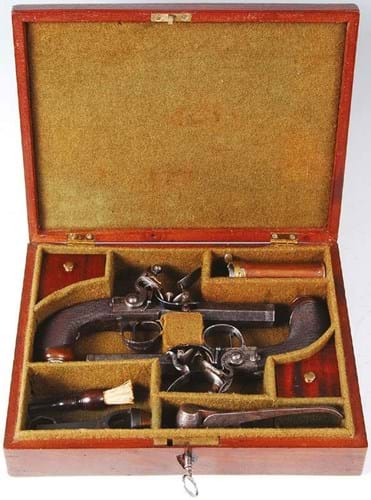
A cased pair of flintlock pistols made in the early 19th century by Mabson & Labron is estimated at £2500-3000 on June 14 at Lacy Scott & Knight.
This cased pair of flintlock pistols above, offered in a Medals & Militaria on June 14 at Lacy Scott & Knight in Bury St Edmunds, Suffolk, were made in the early 19th century by Mabson & Labron – a Birmingham-based gun manufacturer that prospered greatly during the period.
This was largely down to the Napoleonic Wars, which required a huge scale of gun production. Almost two million muskets, rifles, carbines, and pistols were being manufactured for the government alone from 1804-17.
Approximately two-thirds of this production was carried out in Birmingham – known as the ‘Toyshop of Europe’ in the late 18th and early 19th century – where a thriving gun quarter encompassed hundreds of manufacturers, which rose from 125 in 1815 to 455 by 1829.
Estimate £2500-3000.



